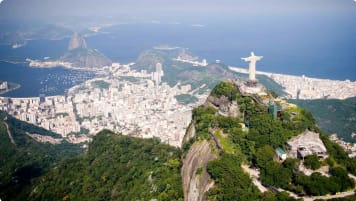Spanish Exploration and Conquest of the Americas
An Antipodean travel company serving World Travellers since 1983 with small group educational tours for senior couples and mature solo travellers. Article summarizes the Spanish explorers and the race against the Portuguese for access to the Americas.
30 Dec 21 · 11 mins read

Spanish Exploration and Conquest of the Americas
By Marco Stojanovik
In 1492 Christopher Columbus first arrived in the Americas searching for a more direct route to Asia. Little did he know that his voyage would spark a process of colonization and conquest over more than three centuries that would transform the Americas. In the process the Spanish Empire decimated the established civilisations and native peoples, plundering and extracting unheard of amounts of wealth.
Starting in the Caribbean, Spanish explorers and conquistadores, such as Hernán Cortés and Francisco Pizarro, soon expanded the empire into new territories across much of the Americas. At the height of the Spanish Empire in the 18th century, it controlled the majority of the two continents, all except for except for Brazil, British America, and small regions of South America and the Caribbean.
This article explores the expansion of the Spanish Empire in the Americas as background reading for Odyssey Travellers tours in the Americas. Much of the information is sourced from Simon Winchester’s Atlantic: A Vast Ocean of a Million Stories, as well as sources linked to throughout.
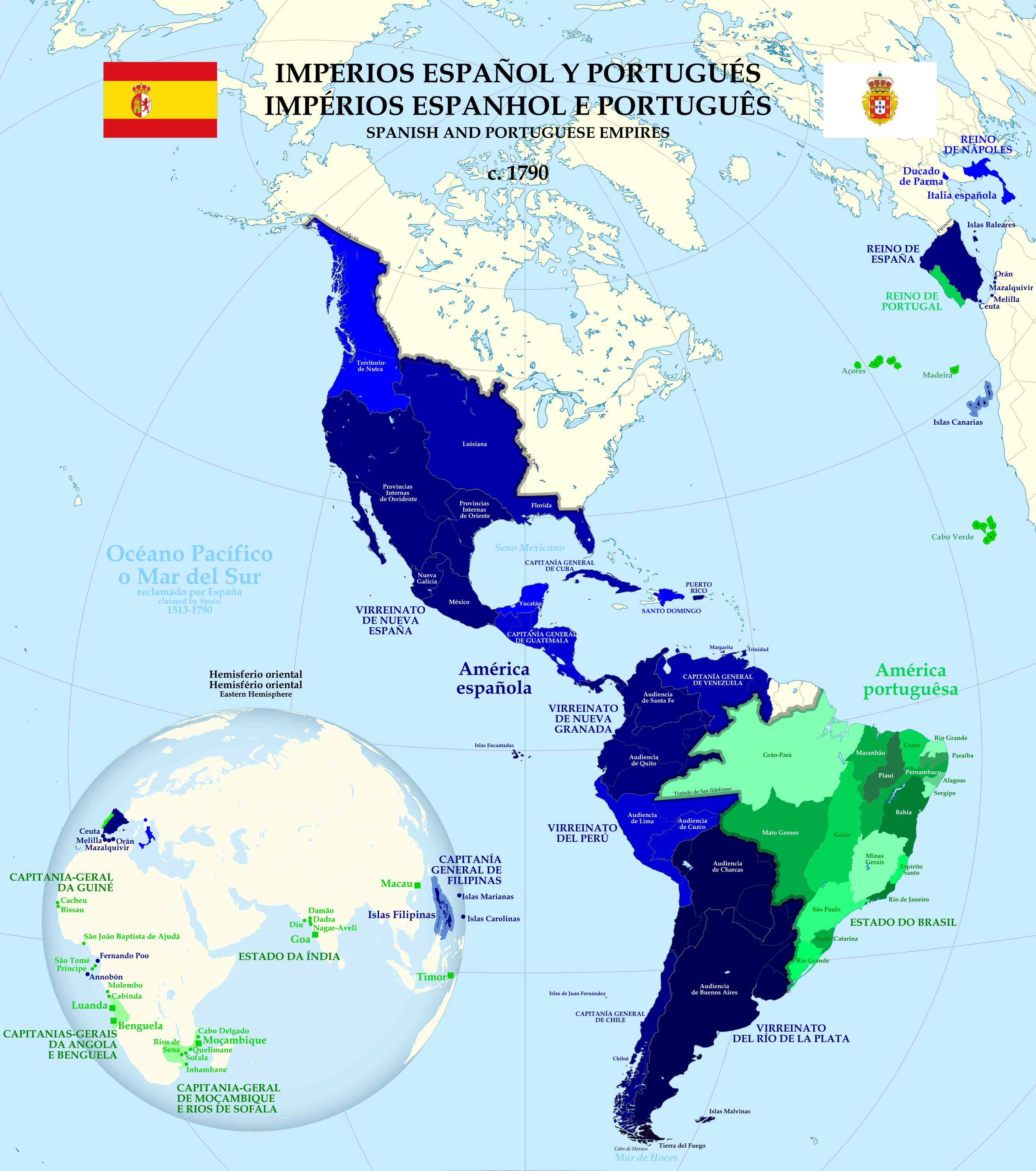
Spanish Imperial Expansion
Spain expanded its territories overseas to the Americas under the Catholic Monarchs Queen Isabella, Queen of Castile, and her husband King Ferdinand, King of Aragon. Their marriage in 1469 unified Catholic Spain and began a process of building a nation that would compete among the great powers of Europe.
Their first feat of territorial expansion occurred on January 1, 1492, with the conquering of the Muslim Emirate of Grenada, the culmination of what is known as the Reconquista. Since 711, much of the Iberian Peninsula had been under Islamic (or Moorish, as it was called) rule. By taking Grenada, the last Moorish stronghold, Spain completed the Christian conquest of the Iberian Peninsula and took a giant step forward in becoming an imperial power.
The Spanish monarchs at this point also became very rapidly profoundly authoritarian in its attitudes and ambition, demanding the expulsion of the Jews of Spain who refused to convert to Christianity.
Spain also turned its ambition to the promises of wealth and riches in Asia. The only problem was that the trade routes between the Christian West and the rich exotic countries of Asia in the east were blocked by the Muslim Ottomans in between. If only Asia could be approached from another direction, then the Ottomans and their allies blocking the passes between the Bosporus and the Khyber could be circumvented.
By 1942, Portuguese explorers had already rounded the southern tip of Africa to sail the Indian ocean. The Spanish monarchs knew this meant the Portuguese would soon reach Asia for themselves. In order to get there first then, and gain the commercial advantage over Portugal, the monarchs decided to turn west to the Atlantic Ocean.
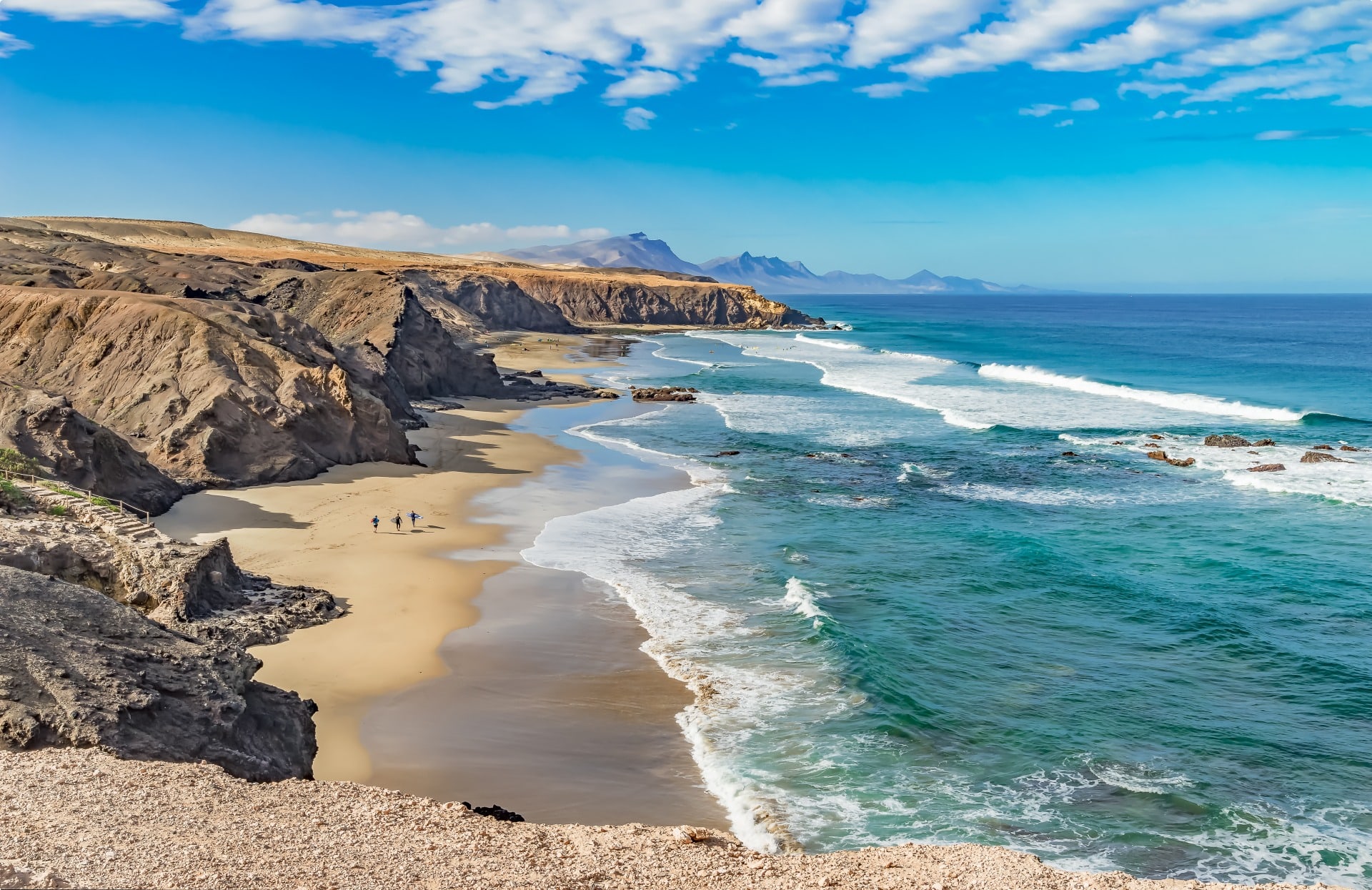
The geographers of the time believed that going westbound by sea would lead straight to Asia, and that at a quite minimal distance. According to the calculations of their cartographers, Japan was a little more than three thousand miles west of the Canary Islands, and the Chinese coast stood just about where Oregon lies today. Free from the predatory and hostile Islamists, the Spanish vessels could sail unchallenged and beat the Portuguese to Asia.
Of course, navigating through the unknown ocean could be incredibly dangerous, and sailors would have no reliable way to establish longitude (how far east or west they were). Nevertheless, finding a new trading route to Asia promised vast wealth and riches, enough to outweigh any danger.
Winchester writes, “If the sea that lay off the west coast of Spain could be easily crossed, and if Christian ships could navigate with ease all the way to Japan and China and then perhaps beyond to India, and if these friendly and much-prized states could all be reached, in essence, from the other side, then the commercial and political benefits were obvious.”
Voyages of Christopher Columbus
Prepared to fund a risky voyage of to discover a more direct route to the Orient, Spain’s rulers officially contracted Christopher Colombus, an Italian born in Genoa, to proceed west out of Spain for Japan and the Spice Islands of the Indies in late 1492. Supplied with three ships – the Nina, the Pinta, and the Santa Maria – Colombus set sail from Palos de la Frontela in Spain on 2 August. Using calculations based on other mariners’ journeys and believing the earth to be much smaller than its actual size, he expected to reach Asia in a short amount of time.
In October, however, he landed quite unexpectedly in the unexplored Caribbean islands – making land fall first on an island in the Bahamas, before sailing on to Cuba and eventually an island he named Hispaniola (present-day Dominican Republic and Haiti). He later wrote to the Spanish throne: “I was to reach Cathay and the extreme east of Asia, not expecting to find such an obstacle of new land as I found.”

Still, he believed he had landed in the East Indies, calling the inhabitants of the lands Los Indios (Spanish for “Indians”). In doing so, he grouped a wide diversity of civilisations, groups, and individuals into a single category.
Upon Columbus’s return to Spain, the Spanish monarch gave him the rank of Admiral of the Ocean Sea and appointed him Viceroy and Governor of all the new lands he had discovered. He then returned on a further three voyages around the Caribbean between 1492 and 1504.
He returned home from his final journey in poor health, dying shortly after in 1506. Until his dying day, he remained convinced he had succeeded in reaching the Orient via a western route, none the wiser he had actually made a much greater discovery, though the Vikings had already discovered today’s America several centuries earlier via Iceland and Greenland.
Spanish Conquistadors Arrive in the Americas
Other explores followed Colombus, most famously Amerigo Vespucci (from whom we get the name America), to reveal this was actually a new continent located across the Atlantic Ocean. The 1494 Treaty of Tordesillas, meanwhile, drew a north-to south line through South America, in which Spain gained all territory to the west of the line, and Portugal the lands to the east.
Spanish conquistadors soon followed in the 16th century to colonise the newly claimed lands, including the islands of the Caribbean and mainland of South and Central America, and establish trading routes linked back to Europe. These lands were to be exploited for foodstuffs and mineral wealth for Spanish enrichment.
The much-feared conquistadors were brutal in the subjugation of the Indigenous inhabitants of these lands. The Castilian solider-administrator Nicolas de Ovando first laid out this template for their ruthless behaviour when he was appointed Governor and Captain General of the Indies Islands and Firm-Land of the Ocean in 1502, bringing 1500 colonists with him in thirty ships to settle the island of Hispaniola.

Over the next seven years, he suppressed the locals with such force and violence that he supposedly reduced the native population drastically from half a million to some sixty thousand. He then used the remaining locals, as well of scores of imported Spanish-speaking slaves, to build the rudiments of the first cities.
He also planted sugarcanes he had imported from the Canaries, opened gold and copper mines in the hills, and ordered large galleons to speed the crops and metals back to Spain. Finally, he sent legates to other West Indian islands nearby to spread Spanish rule as widely and as quickly as possible.
Cortés and the Conquest of Mexico
Spain’s New World empire soon expanded from their Caribbean foothold to the South American mainland, driven by the Spanish conquistadors, relentless in their hunger for new land and gold. One of the primary events in the Spanish colonization of the Americas was the conquest of Mexico in 1519, led by Hernán Cortés.
The Spainaird had first arrived in the Americas in 1504, participating in the conquest of Hispaniola. In 1511, he then accompanied Diego Velázquez de Cuéllar, in his expedition to conquer Cuba. Velázquez was subsequently appointed Governor of Cuba, and in 1518 placed Cortés in command of an expedition to explore the Yucatan Peninsula and secure the interior of Mexico for colonization. With 11 ships, 530 conquistadors, horses, and cannons, Cortés set sail for the American mainland in February 1519 to conquer and colonise on behalf of the king of Spain and in the name of Christianity.
Winchester writes, “Once ashore, he began his famously ruthless campaign of suppression and cruelty that resulted in the defeat of the Aztec Empire and the establishment of a permanent Spanish viceroy in the capital of New Spain, Mexico City.”
The Aztecs were the most powerful native civilisation to ever exist in the Western Hemisphere. Conquering their way southwards from northern Mexico, they built the largest empire in the New World, dominating an enormous swatch of central and southern Mesoamerica.
This sprawling civilisation was organised into city-states, centred around the capital Tenochtitlan, an awe-inspiring city built on an island in what was then Lake Texcoco in the Valley of Mexico. Today, the ruins of Tenochtitlan are located in the historic centre of modern-day Mexico City. At its peak, though, it was the largest city in the pre-Columbian Americas and one of the largest and most grand in the world.

When Cortés and his men reached Tenochtitlan, they were astounded by the sophisticated causeways, gardens, and temples in the city, as well as the vast wealth in gold. It was the city of Cortés’s dreams.
“It seemed like an enchanted vision,” wrote Cortés. “Indeed, some of our soldiers asked if it was not all a dream. It was so wonderful that I do not know how to describe this first glimpse of things never heard, seen, or dreamed of before… It was the most beautiful thing in the world.”
The Aztec ruler, Moctezuma II, welcomed Cortés into the city peacefully, believing he was perhaps the Aztec god Quetzalcoatl. In an unnerving series of consequences, legend had it that Quetzalcoatl was white skinned, bearded, and would return from the across the sea to reclaim his kingdom.
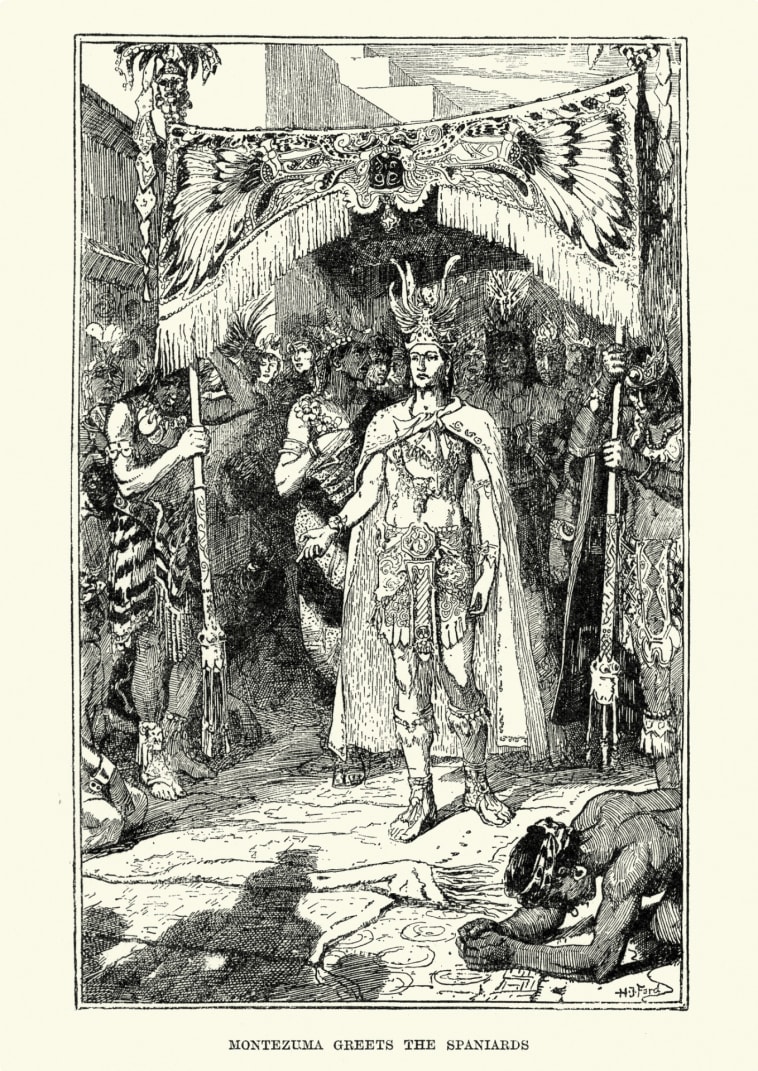
Cortés and his men then took Moctezuma hostage and murdered hundreds of high-ranking Mexica during a religious festival. This angered the people of Tenochtitlan, who rose up in revolt, forcing the Spanish to flee the city.
Having regrouped from the Spanish defeat, Cortés went to work slowly creating alliances and recruiting tens of thousands of native peoples to help overthrow their Aztec masters. The diverse groups of people in the region at the time were not united under the Aztecs but actually resented their domination and many were ready to rebel. The Tlaxcalan people in particular provided as many as 200,000 fighters to the Spanish to assist in the siege of Tenochtitlan in 1521.
The 75-day siege cut of food and fresh water causing a famine in the city, while smallpox introduced by the Spanish also took a heavy toll on the people in Tenochtitlan, to which they had no immunity. Historians estimate that around 100,000 Aztecs were killed during this time. The Spanish then sacked the city killing a further 15,000.
By August 1521, Cortés and his armies had utterly destroyed the Aztec capital and toppled the million-person strong empire. Cortés claimed Tenochtitlan for Spain and renamed it Mexico City.
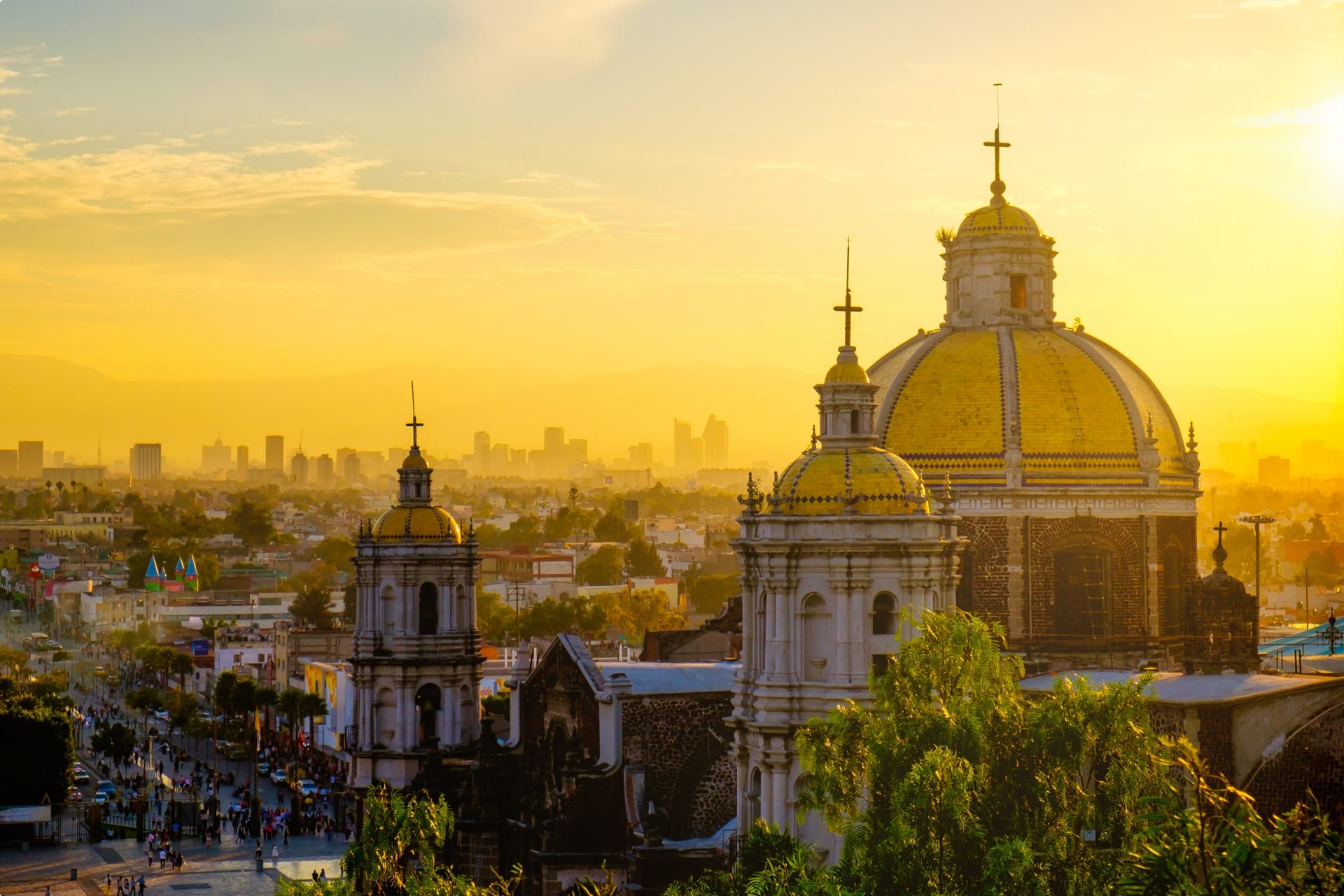
Conquest of the Inca Empire
Inspired by Cores’s conquest of Mexico, another Spanish explorer, Francisco Pizarro, made his way south in the 1520s following rumours of vast wealth of the Inca Empire. At this point, the vast mountainous empire spanned a considerable area, the largest of the pre-Columbian civilisations.
From their capital in Cuzco in the Andean highlands, the Inca had conquered and negotiated to expand their empire some 1,800,000 km2 (690,000 sq mi) across the western half of South America. It stretched southwards from present day Ecuador to central Chile and Argentina and eastward from the Pacific Ocean to the edge of the Amazonian jungles.
Connecting the vast empire was an extensive road network covering at least 40,000km, known as the royal highway or qhapaq ñan. An invaluable part of the Inca empire, the roads allowed for the expansion and maintenance of power over 12 million people of different cultures and ethnicities. Many areas of the empire were governed by local leaders, who were watched and monitored by Inca officials ultimately under the direct control of the emperor.
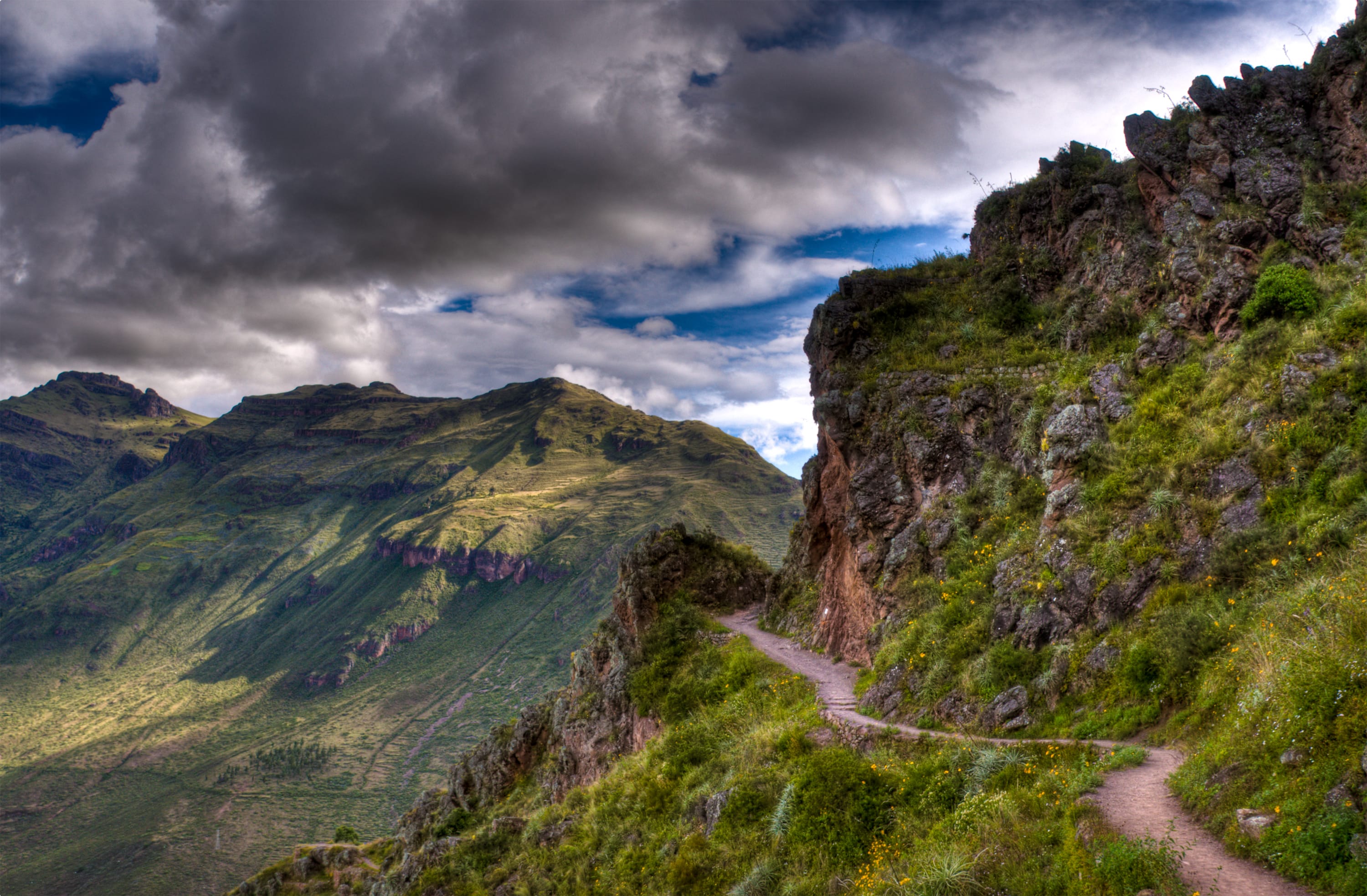
Pizarro’s first efforts to conquer the Inca Empire in the 1520s failed due to bad weather, lack of adequate food supplies and military skirmishes with hostile natives. When he returned in 1532, however, he encountered a vastly different environment, with smallpox and civil war destroying the empire.
Smallpox, introduced by the Spanish into the Americas, had spread widely and was ravaging the population. The Incas, possessing no natural immunity to the disease, were unable to fend off the disease, cutting the population in half.
Amongst the fatalities were the Incan emperor Huayna Capac and many members of his family, including his eldest son and designated heir, Ninan Cuyochi. This caused a bloody war of succession, in which prince Atahualpa ultimately defeated his half-brother Huáscar was in the process of exterminating all possible rivals in the imperial family at the time the Spanish arrived.
Pizarro was thus able to use the weakened population and unrest to his advantage. In November 1532, with 168 Spanish soldiers and their Indigenous allies, Pizzaro captured the emperor Atahualpa at the Battle of Cajamarca in today’s northern Peru. Atahualpa was then held prisoner for nearly a year, with the Spanish collecting a huge ransom in gold and silver.
Despite collecting the ransom, Pizarro ordered the execution of the emperor in August 1933, and began his march to conquer Cuzco at the heart of the empire. A long campaign of conquest then ensued, with years of fighting that ultimately ended in Spanish victory and colonisation of the region as the Viceryoyalty of Peru in 1542.
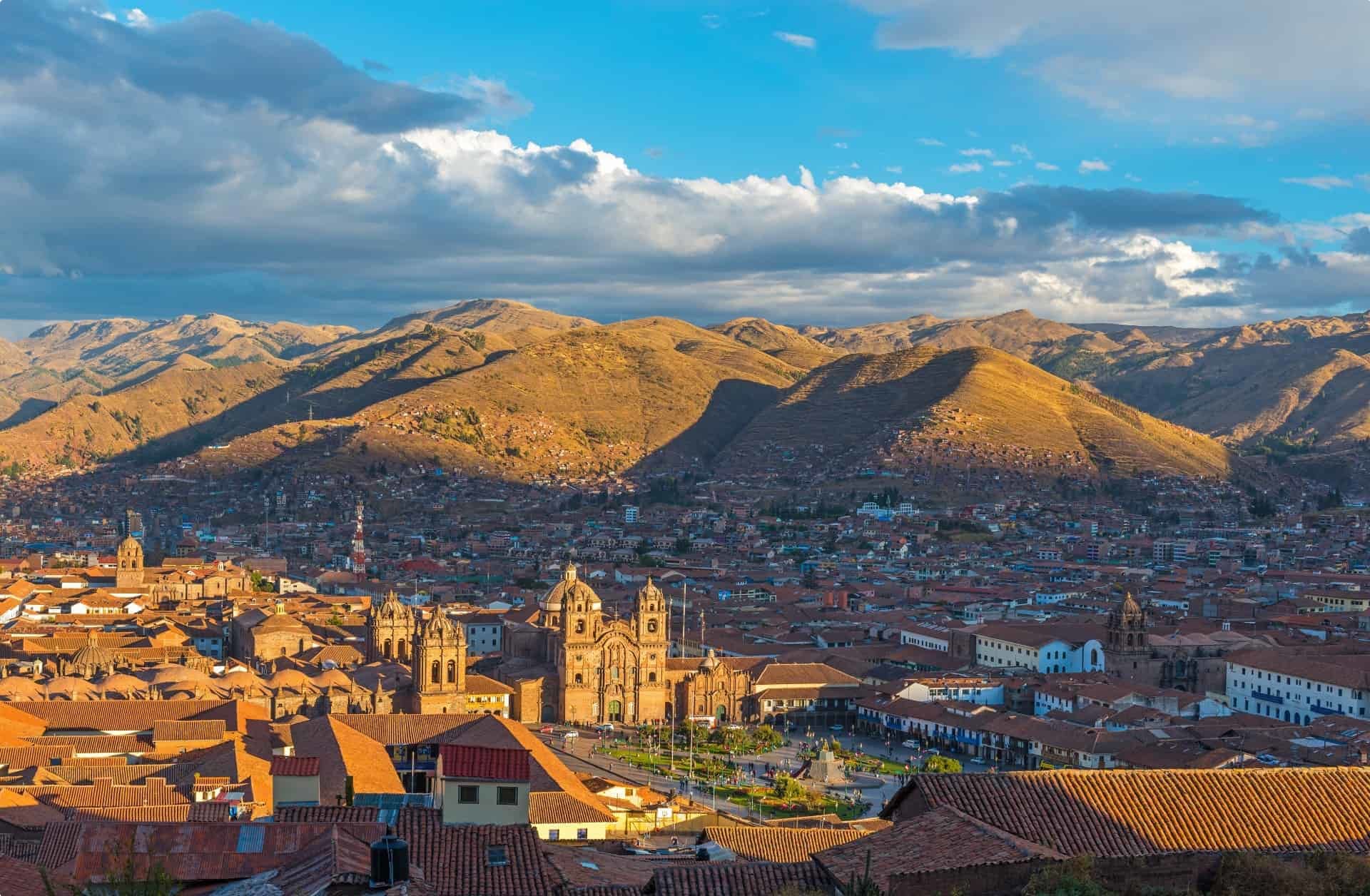
Further Spanish Expansion
From Peru and Mexico, Spanish conquistadors expanded northwards into the Americas, seeking gold and silver and to expand Spain’s empire. Huge expeditions traversed North America, with hundreds of soldiers, priests, settlers, slaves, and enormous numbers of livestock. They scoured the landscape for another wealthy Indian empire to be conquered.
The conquistador Hernando de Soto, having participated in Pizarro’s conquest of the Inca, led expeditions across the southeast of the modern United States from 1539 to 1542. Bringing European diseases and violence, the Spaniards tortured and killed their way across what is now Florida, Georgia, the Carolinas, Tennessee, Alabama, Mississippi, Arkansas, Oklahoma, Louisiana, and Texas. De Soto himself died of sickness during the expedition in 1542, with the surviving Spaniards returning to Mexico City unsuccessful in their goal of finding vast hoards of gold and silver.
Francisco Vásquez de Coronado, meanwhile, led Spaniards and native allies to pillage their way across the Southwest of the modern United States between 1540 and 1542. They went in search for wealth and the mythical Seven Cities of Gold. Instead, they found Native American farmers, communities, and villages across what are today Arizona and New Mexico. Failing in its quest for gold, the expedition returned to Mexico, then called New Spain, leaving Coronado bankrupt.
Nevertheless, North America had been opened up for the Spaniards, who would soon have footholds across much of the continent. At the height of the Spanish Empire in the Americas, it would expand across the Caribbean Islands, half of South America, most of Central America and much of North America.
In due course the Portuguese, the French, the Dutch, and the English would sail their colonizing ships across the Atlantic to the Americas too. They also would subdue the Indigenous peoples they encountered, establish settlements for themselves, and plunder wealth and goods to be sent back to Europe.
Tour of the Americas
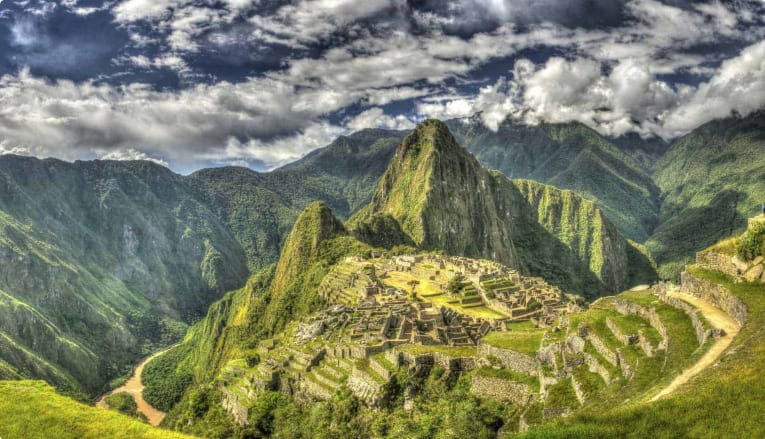
Odyssey Traveller visits a range of destinations across the Americas, tailor made for mature and senior travellers. Our range of stimulating educational tours are designed for active, inquisitive travellers in a small group environment that is typically comprised of between 6 to 18 like-minded travellers. All of our educational tours reflect our philosophy to offer a wide range of educational, cultural, and heritage journeys that expand horizons and broaden the mind.
Our tours of the Americas include:
- South America Small Group History and Culture Tour (25 days)
- Journey through Central America: Panama, Costa Rica, Honduras, and Guatemala (27 days)
- Ecuador and Peru Archaeology Tour (22 days)
- Argentina Dinosaur Dig Small Group Tour (17 days)
For more information, click here, and head to this page to make a booking.
Articles about the Americas published by Odyssey Traveller:
- South America travel advice for touring
- Chile, Peru & Bolivia travel advice for mature & senior travellers
- Argentina & Brazil travel advice
- Discover Bolivia: the definitive guide for travellers
- Chile & Easter Island: the definitive guide for seniors
- Naming of America
External articles to assist you on your visit to the Americas:
Related Tours
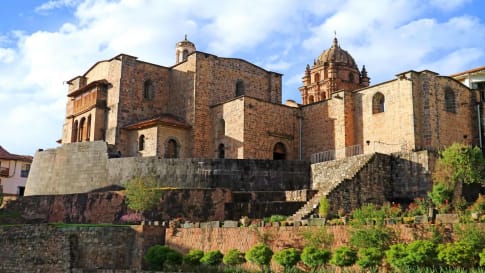
22 days
Mar, AprEcuador and Peru Archaeology tour
Visiting Ecuador, Peru
This 22-day small group tour highlights the most prominent ancient ruins and archaeological finds across Ecuador and Peru and showcases the vast culture and impact of pre- and post-Inca civilization.
From A$16,250 AUD
View Tour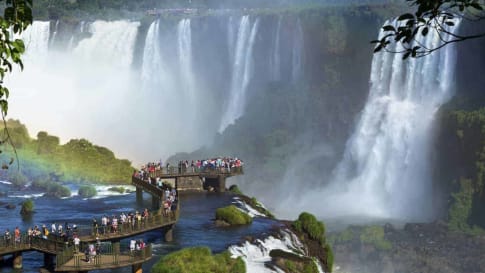
25 days
Apr, SepSouth American Small Group History and Culture Tour
Visiting Argentina, Bolivia
Experience the jewels of South America on this in-depth itinerary featuring the dramatic contrasts of this great continent on a small group tour for senior couples and solo travellers. Journey through Chile, Peru, Bolivia, Argentina and Brazil. Marvel at the ancient cultures and natural wonders of the Amazon, the snow-capped peaks of the Andes mountains, the calm waters of Lake Titicaca and the jewel coloured beaches of Rio.
From A$20,785 AUD
View Tour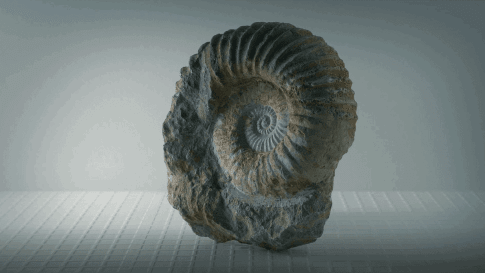
17 days
SepArgentina Dinosaur dig including Titanosaur small group tours
Visiting Argentina
Small group tour for senior and mature couples and solo travellers to explore the Titanosaurs the largest Dinosaurs to walk the planet. Their skeletons have recently been discovered in Argentina. This program spends 20 days travelling to visit and experience the dig sites where much of Argentina’s paleontological history has been found, Patagonia. With local paleontologists and guides providing an insight into this remote part of the country you get a unique opportunity to learn first hand about the research on the Argentinian Dinosaur collection.
From A$18,425 AUD
View Tour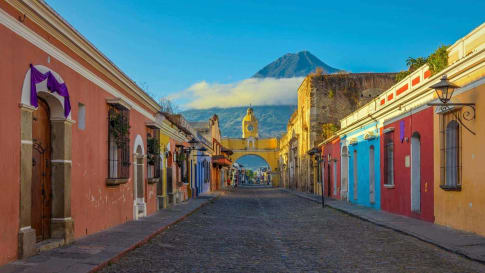
27 days
Oct, AprJourney through Central America: Panama, Costa Rica, Honduras, and Guatemala
Visiting Costa Rica, Guatemala
Join Odyssey Traveller as we go on a 27-day small group journey for mature and senior couples and solo travellers across Central America, exploring the history and diverse scenery of Panama, Costa Rica, Honduras, and Guatemala.
From A$22,855 AUD
View TourRelated Articles
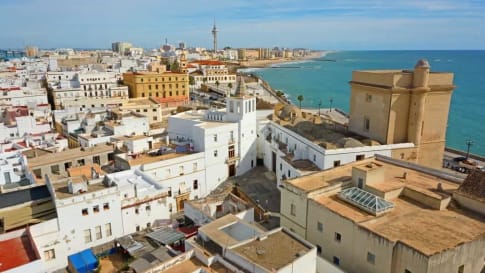
Cadiz, Spain
Cadiz, a long history, part of the Roman Empire, an important place for Mediterranean trade and exploring the Atlantic. Learn and see more about Cadiz and Spain on a small group educational tour for senior couples and mature solo travellers touring Europe.
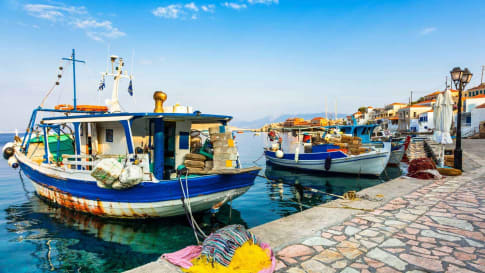
Empires Crossing the Mediterranean: 1130-1300
As a sea connecting continents and stretching from the Atlantic Ocean in the west to Asia in the east, the Mediterranean has for centuries been a centre of trade and exploration.
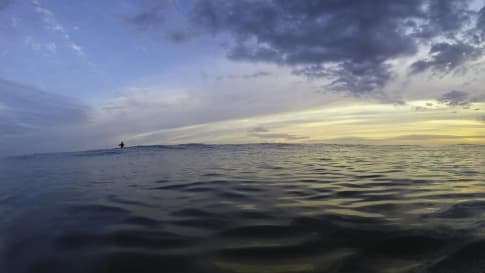
Pillars of Hercules
Article about the history of where the Mediterranean sea meets the Atlantic ocean for the explorers from Crete, Italy, Spain, including the Phoenicians and the Romans. For senior couples and mature solo travelers interested in small group educational tour.
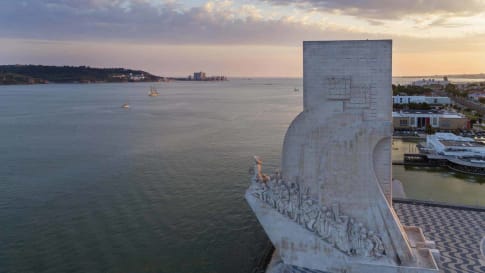
'Queen of the Sea': Lisbon: The Definitive Guide for Travellers
‘Queen of the Sea’: A History of Lisbon In 1554, the writer Damião de Góis claimed that out of all the European cities, only Lisbon and her rival Seville ‘could rightfully be called Ladies and…

Atlantic Ocean and How it Shaped Ancient Communities In Europe
Article of interest for senior couples and mature solo travellers joining a small group European tour to Faroe Islands, Scottish Isles, Morocco or Portugal. Focus is on the early exploration of the Atlantic.
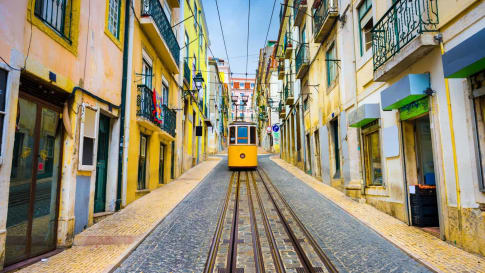
The Golden Years of Lisbon
Successfully breaking the Venetian monopoly on spices and also cornering the African market made Portugal cash-rich. Pepper, which the Portuguese bought for two cruzados (gold coin) a sack in Cochin, India, was sold for 30 cruzados in Lisbon.
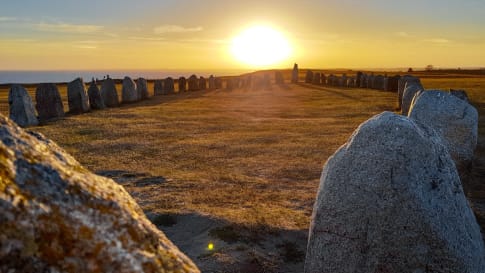
Vikings-explorers, raiders, traders
Article introducing Vikings and Outhere the explorer. Learn more on a small group educational tour for senior couples and mature solo travelers going to Iceland, Greenland, the Arctic circle or the Orkney islands.



